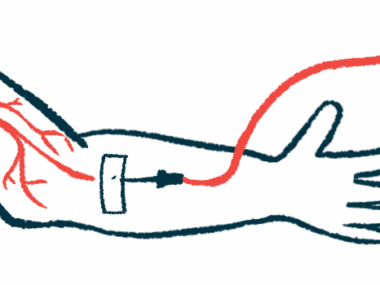Worse sinonasal symptoms linked to higher risk of GPA relapse
Severe symptoms in remission tied to nearly 3X higher risk in 2 years
Written by |

Sinonasal symptoms, as assessed with 22-item Sinonasal Outcome Test (SNOT-22), a patient-reported questionnaire, are more severe when ANCA-associated vasculitis (AAV) is active than during remission, a study shows.
Sinonasal symptoms are those that affect the nose and the sinuses, that is, the air-filled cavities around the eyes and nose. More severe sinonasal symptoms during remission were associated with a nearly three times higher risk of relapse within two years relative to milder symptoms among people with granulomatosis with polyangiitis (GPA), but not other AAV types.
“These findings support the possibility that a patient questionnaire could be used to predict relapse of GPA, which might inform therapeutic decision-making, and raises new hypotheses about the potential role of the upper airway in the [disease mechanisms] of relapse of AAV,” the researchers wrote in “Patient-reported sinonasal symptoms and risk of relapse in ANCA-associated vasculitis,” which was published in Arthritis Care & Research by researchers at the University of Pennsylvania, Philadelphia.
People with AAV, an autoimmune disease that causes small blood vessels to become inflamed and damaged, may have sinonasal symptoms, such as a runny or stuffy nose, an infection of the sinuses, and a loss of smell. Sinonasal symptoms have been linked to relapses in GPA patients, but “more detailed characterization of [such] symptoms is lacking in AAV,” wrote the researchers, who asked 168 AAV patients and 51 healthy people to fill in SNOT-22 at every visit to determine “whether patient-reported outcomes (PROs) related to sinonasal disease … predict relapse in AAV.” SNOT-22 is a measure of chronic rhinosinusitis, or long-lasting inflammation of the nose and sinuses, that assesses symptom burden and quality of life.
Each of the 22 questions are scored on a scale from 0 (no symptoms) to 5 (most severe symptoms). The maximum total score is 110 and a higher total indicates worse symptoms.
Sinonasal involvement and disease activty
Regarding AAV types, 107 patients had GPA, 40 had eosinophilic granulomatosis with polyangiitis (EGPA), and 21 had microscopic polyangiitis (MPA). The median SNOT-22 score was 30 points.
Most GPA and EGPA patients had a history of sinonasal involvement, while none with MPO did.
AAV patients at first remission visit reported significantly higher SNOT-22 scores, indicating worse sinonasal symptoms, than healthy people (20 vs. 5 points). Also, SNOT-22 scores were significantly higher among those with a history of sinonasal involvement.
Analyses adjusted for potential influencing factors showed that AAV patients reported significantly higher SNOT-22 scores in periods of active disease than during remission, irrespective of AAV type.
Moreover, higher scores at the initial remission visit were significantly linked to a 2.7 times higher risk of a whole-body disease relapse within two years in GPA patients, but not in EGPA or MPA patients. This was true even for GPA patients “without clinically apparent sinonasal disease in the past,” the researchers wrote.
Among the GPA patients with a history of sinosanal disease, SNOT-22 scores were higher months to years before a whole-body relapse, but remained low with sustained remission.
The findings show that “a patient-reported outcome measure of sinonasal disease, the SNOT-22, not only changes with disease activity in AAV, but also is associated with a higher risk of relapse in GPA, months to years before relapse,” the researchers wrote.
Monitoring sinonasal symptoms using SNOT-22 could help predict when AAV might become active again, particularly in GPA patients, letting doctors intervene earlier to prevent a relapse, data suggest.
“Future studies are needed to determine if the SNOT-22 score can be used for selective escalation or de-escalation of immunosuppressive therapy or assessment of treatment response,” the researchers said.






